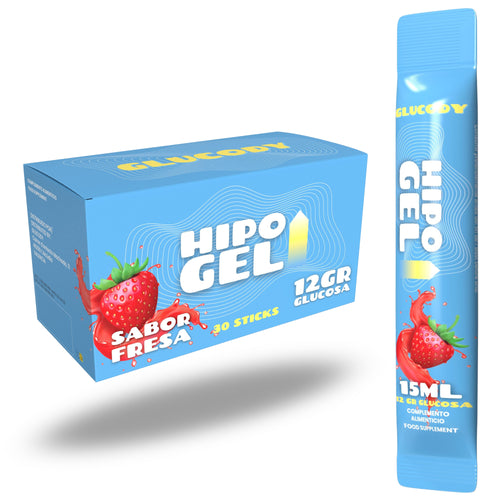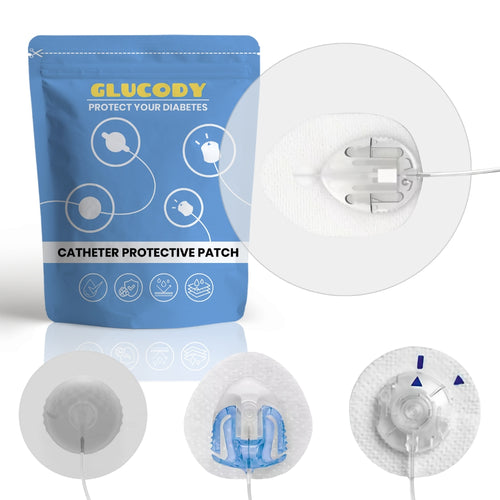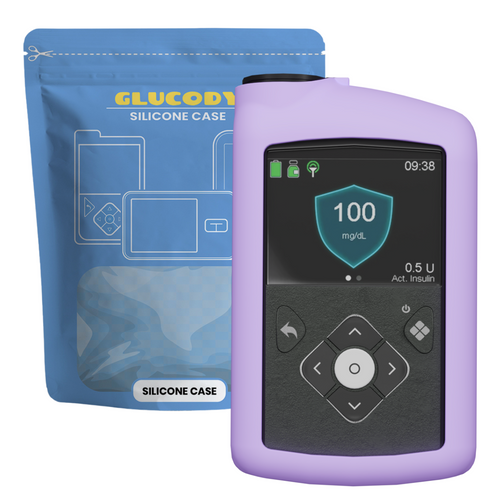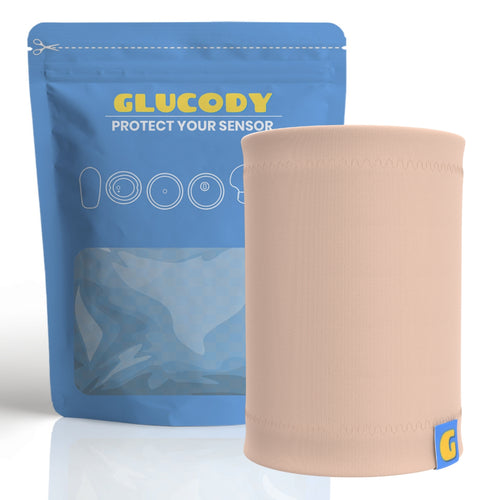Choosing an insulin pump is a crucial decision that transforms the management of type 1 diabetes by offering greater flexibility and control. Knowing the different types of insulin pumps available is the starting point for many. With so many options on the market, it is essential to understand the features of each to find the device that best suits your lifestyle.
In this article, we will guide you through the available options, from models with tubes (conventional) to the latest tubeless (patch) systems, so you can make an informed decision.
And since we know style is important, at Glucody we also offer options for customization and protection of your device, such as Medtronic insulin pump stickers, which provide style and safety in daily use.
What is an insulin pump?
The insulin pump is an electronic medical device that continuously administers insulin through a catheter inserted under the skin. Its main function is to mimic as closely as possible the action of the pancreas, providing:
· Basal insulin: small doses programmed throughout the day and night.
· Insulin boluses: additional doses that the patient activates to cover meals or correct high glucose levels.
Inulin pumps represent an alternative to uncomfortable daily injections. They are especially indicated for people with type 1 diabetes who require more stable control.
Types of insulin pumps
Currently, there are mainly two types of insulin pumps: conventional pumps (with tube or catheter) and patch pumps (tubeless). Both serve the same function but have different features that adapt to various lifestyles and medical needs.
Conventional pump
A conventional insulin pump is an electronic device the size of a small mobile phone that delivers insulin continuously and precisely. Its main feature is that it is connected to the body via a thin, flexible tube (a catheter), which is inserted under the skin with a cannula and held in place with an adhesive.
This system more faithfully mimics the pancreas's function than multiple injections, releasing rapid-acting insulin 24 hours a day.

Operation
Its operation is based on two types of insulin doses that the user programs:
· Basal dose: Minimum and constant amount of insulin over 24 hours.
· Bolus dose: Extra dose that the user administers for meals or glucose corrections.
Features and advantages
Conventional insulin pumps offer a series of benefits that improve quality of life and glycemic control:
· Greater precision and flexibility: Allows very small and adjustable doses, helping to avoid glucose spikes.
· Fewer injections: Eliminates the need for multiple daily injections, as the catheter is changed every 2-3 days.
· Better glycemic control: Contributes to more stable blood sugar control.
· Automated calculations: Its bolus calculator simplifies decision-making for doses.
· Adaptability: Allows disconnection for activities like showering or sports.
Patch pump
The patch pump, also known as a “tubeless” pump, is a more discreet and lightweight device that adheres directly to the skin without the need for visible tubes.
Unlike conventional pumps that connect to the body with a catheter, the patch pump integrates the insulin reservoir, cannula, and pumping mechanism into a single disposable unit.
Operation
The patch pump consists of two main parts:
· The Pod (or patch): It is the disposable unit that contains the insulin and adheres to the body. Once activated, a small, thin catheter is automatically inserted under the skin to deliver the insulin.
· Remote control unit (PDM): It is a separate device, similar to a smartphone, or even an app on the mobile phone itself, that
allows the user to program and control insulin delivery. From here, basal doses and meal boluses can be set.
The Pod is replaced with a new one every 2 or 3 days. It continuously delivers basal insulin, and the user uses the remote control to order bolus administration as needed.

Features and advantages
Patch pumps have become very popular thanks to their unique features:
· Freedom and discretion: It has no visible tubes, making it more discreet and allowing greater freedom of movement.
· Ease of use: The insertion process is simple and automated.
· Water-resistant: Allow the user to shower or swim without disconnecting.
· Better glycemic control: They offer precise blood glucose control, reducing hypoglycemia and variability.
Which pump to choose?
Choosing the best device for you depends on several factors:
· Patient's age: children and adolescents usually adapt better to patch pumps, while adults may prefer conventional ones for their level of customization.
· Lifestyle: if you do sports or seek discretion, the patch pump may be more comfortable; if you need thorough control, the conventional one is more advisable.
· Sensor compatibility: some models integrate with continuous glucose monitors, creating hybrid artificial pancreas systems.
· Medical recommendation: it will always be the endocrinologist who, after analyzing the clinical history, determines the best option.
Deciding among the different types of insulin pumps is an important step in diabetes treatment. The key is to assess specific needs and rely on the right accessories to ensure safety and durability.
In this regard, having quality accessories such as protective cases, armbands, and stickers for Medtronic insulin pumps not only extends the device's lifespan but also provides comfort and style to the patient.
Glucody: Your ally for diabetes care
At Glucody you will find everything you need to protect and personalize your insulin pump: durable cases, ergonomic armbands, and creative stickers for Medtronic insulin pumps that add style to your treatment.
Our goal is to support you at every stage of your care, with products designed to provide you with safety and confidence. Visit our online store and discover how our products can help you live your treatment with greater comfort and peace of mind.












